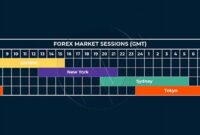Managing currency risk is a critical aspect of navigating the foreign exchange market, particularly for those new to trading. Employing appropriate risk mitigation techniques can protect capital and provide a more stable trading experience. This article explores fundamental techniques designed to minimize potential losses from adverse currency fluctuations, offering novice traders a foundation for safer and more informed trading decisions.
Direct Hedging
Direct hedging involves simultaneously opening an equivalent but opposite position to an existing trade. For example, if a trader holds a long position on a currency pair, a direct hedge would involve opening a short position on the same pair. This effectively neutralizes potential losses from adverse price movements.
Correlation Hedging
This strategy leverages the statistical relationship between different currency pairs. By taking positions in negatively correlated pairs, traders can offset potential losses in one pair with gains in another. This approach requires careful analysis of correlation coefficients and market trends.
Options Hedging
Currency options provide the right, but not the obligation, to buy or sell a currency at a predetermined price. Purchasing options can limit downside risk while preserving the potential for upside gains. This flexibility comes at a cost, the option premium.
Futures Contracts
Similar to options, futures contracts can be used to hedge against future currency fluctuations. However, unlike options, futures contracts obligate the holder to buy or sell at a specified price on a future date. This can be beneficial for locking in exchange rates for future transactions.
Stop-Loss Orders
A stop-loss order is an automated instruction to close a trade when a specific price level is reached. This helps limit potential losses by automatically exiting a position if the market moves against the trader’s prediction.
Limit Orders
Limit orders work in conjunction with stop-loss orders, allowing traders to set a target price for closing a profitable trade. This automated approach helps secure profits and manage risk effectively.
Diversification
Spreading investments across various currency pairs can mitigate the impact of adverse price movements in a single currency. Diversification reduces portfolio volatility and enhances overall stability.
Currency ETFs
Exchange-traded funds (ETFs) focused on currencies provide a simplified way to access and hedge against currency movements. These funds track the performance of a specific currency or a basket of currencies, offering diversified exposure and liquidity.
Forward Contracts
Forward contracts are agreements to exchange currencies at a predetermined price on a future date. These contracts are typically used by businesses to hedge against exchange rate fluctuations affecting international transactions.
Tips for Beginners
Start with small amounts of capital to gain experience and minimize potential losses.
Thoroughly research and understand the chosen hedging strategy before implementing it.
Utilize demo accounts to practice hedging techniques in a risk-free environment.
Consult with a qualified financial advisor to discuss specific hedging needs and strategies.
What is the simplest hedging strategy for a beginner?
Using stop-loss orders is often the easiest starting point for beginners. It requires minimal setup and provides a basic level of protection against adverse price movements.
Are there free tools available to help with hedging?
Many online brokerage platforms offer free charting tools, economic calendars, and educational resources that can assist with hedging strategies.
How much capital do I need to start hedging?
The required capital varies depending on the chosen hedging strategy and the trader’s risk tolerance. It’s recommended to start with a small, manageable amount.
How can I learn more about advanced hedging techniques?
Numerous online courses, books, and webinars delve into more sophisticated hedging strategies. Continuing education is crucial for developing expertise in this area.
Implementing appropriate hedging strategies is essential for mitigating currency risk and achieving long-term success in the forex market. By understanding and applying these fundamental techniques, beginners can build a solid foundation for informed trading decisions and navigate the complexities of the currency market with greater confidence.



